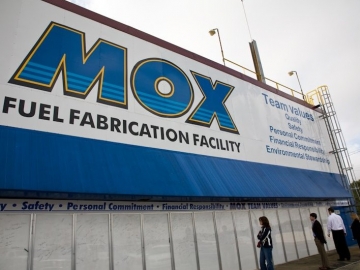As part of nuclear disarmament, Russia and the U.S. agreed to convert the plutonium in many of their nuclear warheads into fuel for nuclear reactors. The plutonium is mixed with uranium to dilute it producing what is called Mixed Oxide fuel (MOX). For fifteen years, plutonium warheads from Russia were converted to nuclear fuel to burn in U.S. nuclear power reactors. This arrangement is just ending which will cause the price of MOX to rise.
In 2005, the Nuclear Regulatory Commission granted a ten year construction license to Shaw Areva MOX Services (SAMS) for the construction of the first MOX plant in the U.S. That license will run out in 2015 and the MOX plant is far from complete. After a two year delay, actual construction of the MOX plant began in 2007. The MOX plant design was based on the design of the French Melox MOX facility. The U.S. MOX plant was supposed to begin operation in 2016 with an estimated construction cost of about five billion dollars. In 2012, the U.S. Government Accountability Office estimated that the MOX plant would not be ready to operate before 2019 and that it would cost almost eight billion dollars. There have been budget cuts over the years and SAMS only requested three hundred and twenty million dollars for 2014 due to project delays.
SAMS requested an extension of its construction license in May of 2014. They said that there had been significant progress in construction of the MOX plant and that they estimated that the facility was sixty percent complete although some key structures still had to be built including the emergency generator building and the reagents processing building.
SAMS has offered several reasons for the extension request. Since this is the first such plant to be constructed in the U.S., they were not able to draw on prior experiences in such plant construction. They pointed out that the actual annual funding has been less than the project funding requirements for several years. There is a shortage of vendors who produce the necessary components. There is also a shortage of qualified construction workers available for the project. In addition, there was that two-year delay between the grant of the original construction license and the actual beginning of construction.
In October of 2014, the NRC basically said that extension "would not have a significant effect on the quality of the human environment because it does not involve any additional impacts or represent a significant change to those impacts described and analyzed in the previous environmental report and final environmental impact statement." A week ago, the NRC granted SAMS the requested ten year license extension.
Since the funding for the MOX project comes from Congress, there could be delays in construction introduced by reduction of funding in Congressional budget negotiations. As with many other nuclear construction projects, the MOX project is way behind in schedule and way over its estimated cost.
